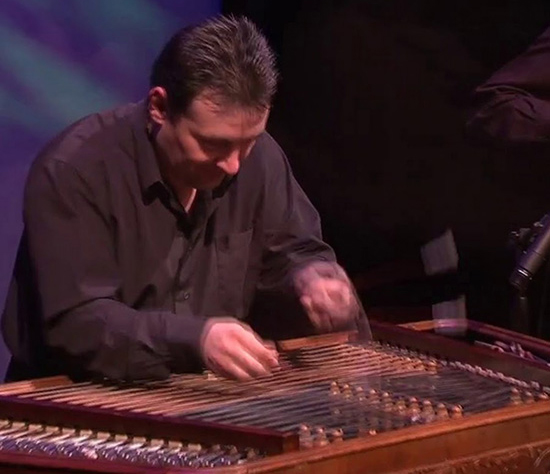by Nicholas Stevens

The Rocky River Chamber Music Society presented the concert on Monday, October 14, in West Shore Unitarian Universalist Church. Not for the first time on this organization’s series, the number of attendees exceeded the number of seats. This left many standing, perching on their mobility devices, or sitting out in the hallway. Folding chairs appeared, but too few, suggesting an urgent need for a revised overflow plan.
Violinists Emma Shook and Katherine Bormann, violist Stanley Konopka, and cellist Martha Baldwin revealed their approach to Bartók’s Quartet No. 2 right away: this would be an exercise in carefully balanced builds and retreats. Shook, playing first violin, layered a glossy tone over the warm sounds that open the piece. Baldwin provided a supple spine for the group here and throughout. The sheer loveliness of one isolated folk-like passage summoned imagery of a garden glimpsed through darkness. Dissonances produced brightness of sound rather than clashes, and Shook’s light, fast vibrato sang out over the tension.
Bormann laid down a solid pulse for the rollicking second movement, and Konopka’s viola overflowed with the sound of rustic fiddling. Thundering low chords rang with enough intensity to make The Rite of Spring redundant, and midair pauses showed listeners just how well these players work together.
In the chilling finale, Bormann and Shook traded radiant solos. Hard not to hear as a response to World War I, the composition gives a group the opportunity to surge from quiet mourning to the brink of rage — an emotional cliff on which the players teetered before delivering some of the loveliest sounds of the evening.
Fedoriouk joined Shook and bassist Henry Peyrebrune in Monti’s Csárdás, the cimbalom player mostly taking a supporting role as violin melodies cascaded and soared. This balance would change as the trio moved through a set of unannounced pieces, listed in the program as Hungarian and Romanian folk music but interspersed with favorites from the classical repertoire.
In Brahms’ Hungarian Dance No. 4, Peyrebrune’s soft strokes underpinned music of majestic sadness. The next selection found Fedoriouk taking charge, intentionally drifting around within the group’s overall beat and creating irresistible hazes of harmony. His ability to play faster than humanly possible made this latter half of the program an edge-of-seat experience.
The cimbalom, as it turns out, can sound quite a bit like a Romantic piano, and Fedoriouk wrung profound angst from another unlisted selection. Brahms’ Hungarian Dance No. 5, listed on the program but played as an encore, buzzed with rock ‘n’ roll energy, propelled by the low strings of his instrument — suddenly sounding like an electric guitar.
Published on ClevelandClassical.com October 22, 2019.
Click here for a printable copy of this article



